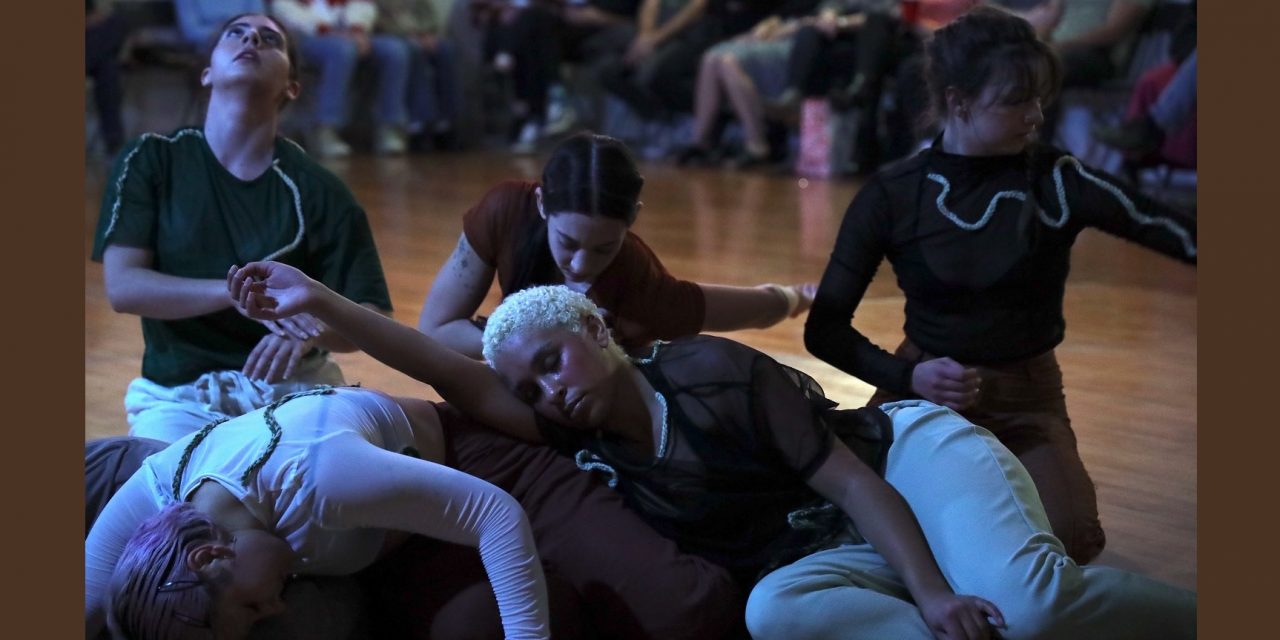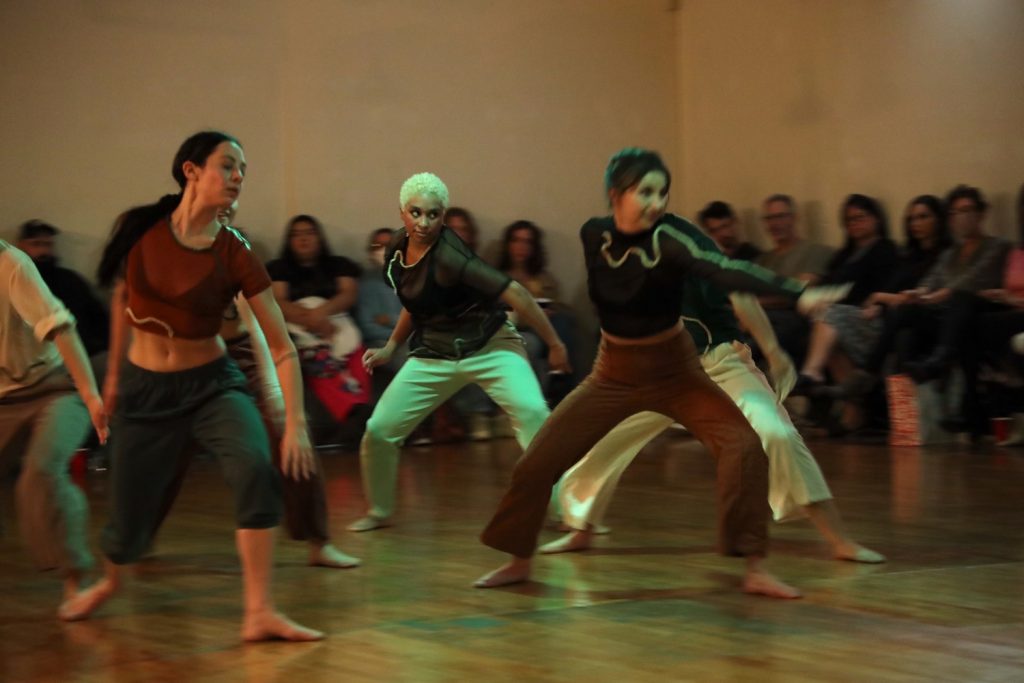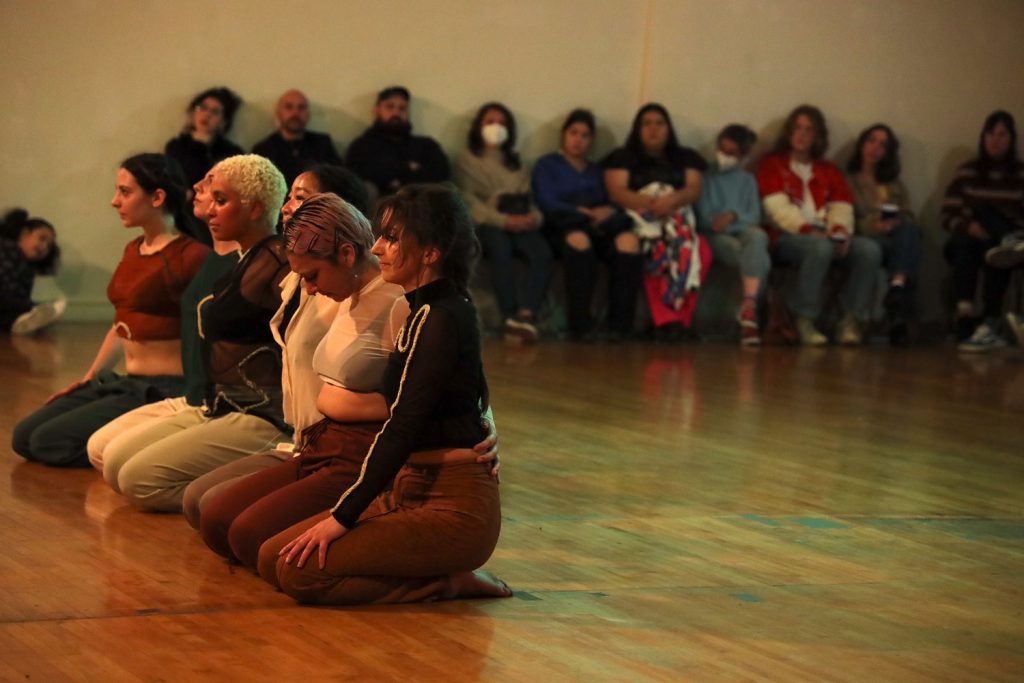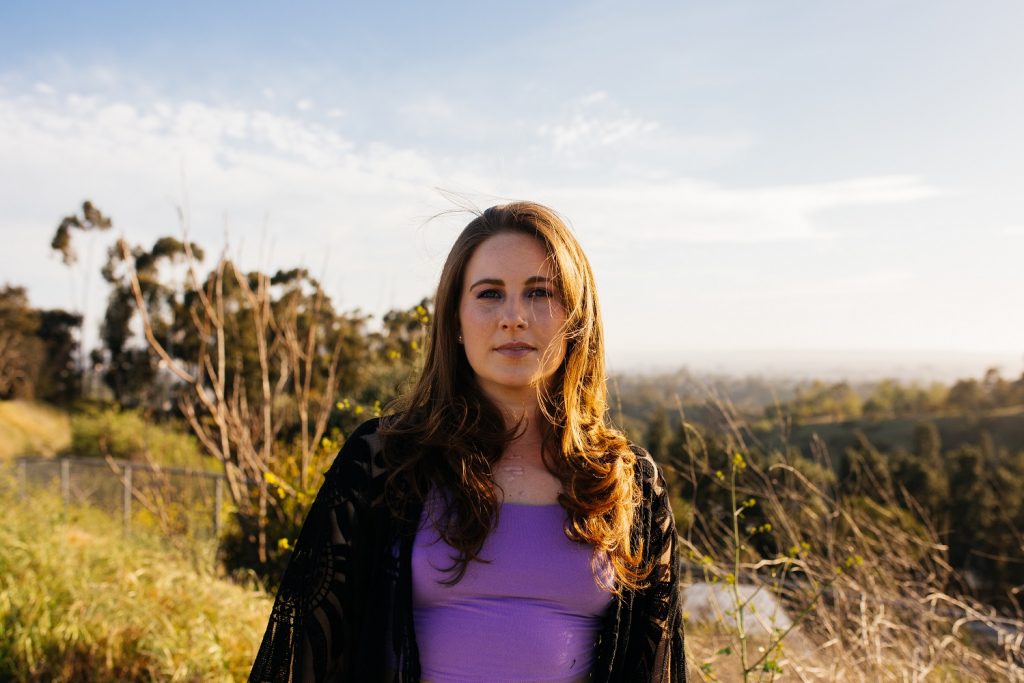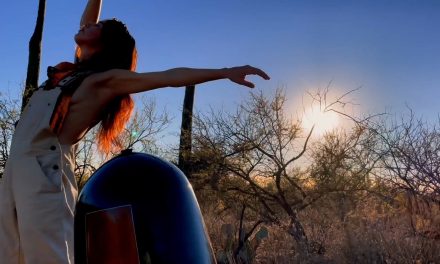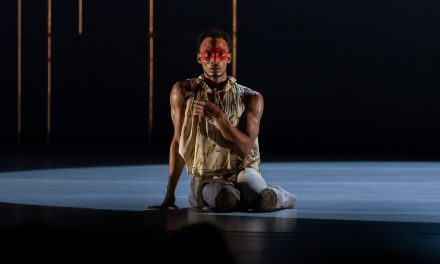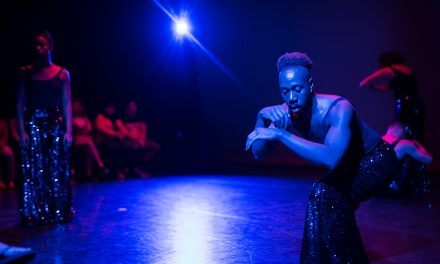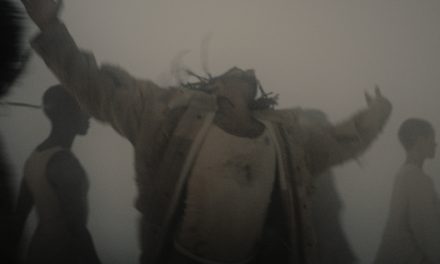Upon entering the unique upper floor of G-Son Studios last Saturday night for Leah Zeiger’s You Live In My Spine there was a certain buzz amongst friends, family, and supporters. Knowing her work largely derives from her lived experience surviving a teenage abusive relationship, I could not wait to see how her remarkable research in body memory and survivor community would be channeled through choreography. Audience members sat in chairs around the room, creating a directional front, as all six dancers entered in a row of dimmed darkness. Set to live music, composer Max Berlin, cellist Sophia Bacelar, and violist Michael Staffeldt were stationed upstage left, and began playing a gorgeous composition of both live strings, and electronic beats. It was a sound score one could breathe into; a musical structure that influenced movement and yet, let it drift off somewhere unexpected or unplanned.
The choreography was split into two sections, with a brief intermission between. In part I, we had clear patterns of motifs. In fact, repetitive motifs were the backbone of You Live In My Spine (YLIMS). These themes created and used by the individual dancers Alexis Amundarain, Sierra Henry, Alyssa Milligan, Alondra Perez, Amanda Sun, and Amina Yufanyi, became a stabilizer and yet, each differentiated from the other. Every single mover had different subjects, and different patterns of exploration. What I loved most, is that I was able to pick and choose whose journey I would like to be on and for how long. I first followed dancer Sun, and then moved on to Henry, and Yufanyi, and so on and so forth as each and every one of them seemingly improvised their own habits in mindset, thoughts, and feelings. It is such a joy to have choreography that lets my mind wander from one thought to the next. Inevitably, I ended up taking the feelings I had watching one dancer, to the next dancer, and incorporating feelings from the past two dancers to the third dancer. And this repetitive structure became my own dance within the dance. Zeiger beautifully incorporated space and time within the room, rather than just within the choreography itself. While each artist remained mostly separate from the others, we did have glimpses of togetherness in pairs. It seemed, when a pairing happened, like molecules figuring out they are both in the same body of matter, one would demonstrate or show the other how they operate. It felt as though each mover was a muscle contracting and expanding and figuring out their own boundaries and the boundaries of others.
Part II, rather floor work heavy, was a cluster of circular spirals, and of movement initiating from a particular body part such as the head, elbow, or foot. Everyone was in each other’s pathways as pairs of dancers often switched from one to the other in improv. Normally, a section of dance where movers are performing contact improvisation together for minutes on end tends to feel like a cop-out in the choreography. However, in Zeiger’s case the individual movement/ideas of each dancer coming together to be shared with one another felt organic in their contact improvisation. You could see that each one of them moved from a place of love, tenderness, and vulnerability. In addition, composer Max Berlin created an uplifting sound that you might hear when the protagonist of a novel understands what it is all about, when they experience that “a ha!” moment. It was joyous and delightful to have a very different sense of music in part II.
Zeiger’s work is a definite must-go if you’re looking for choreography that feels like a big warm hug. While slightly simple in choreographic style, I felt leaving that I had received so much in return. Her work is understandable and digestible. It’s something I do not necessarily need to rummage around my own brain for an explanation or beat myself up for if I do not comprehend. Zeiger’s work felt like someone reached out and just said, “it’s okay. Relax. I made this for you.” It is clear that she creates from the idea that we all have a body, a vessel, while living on this earth and that is what brings us together in commonality. With egos aside, it is hard not to fall head over heels for YLIMS.
For more information about Leah Zeiger, please visit her website.
For more information about G-Son Studios, please visit their website.
Written by Grace Courvoisier for LA Dance Chronicle.
Featured image: You Live In My Spine – Leah Zeiger – Photo by David Zeiger

